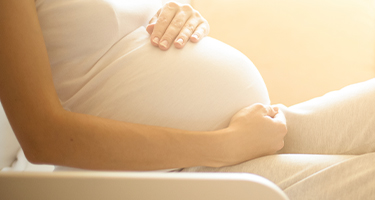
- This pioneering study documents, for the first time, the use of allogeneic (donor-derived) platelet-rich plasma (PRP) obtained from umbilical cord blood as a treatment to regenerate atrophic or thin endometrium, as well as in cases of Asherman’s syndrome
- Allogeneic PRP contains a significantly higher concentration of growth factors and anti-inflammatory properties than autologous PRP, thanks to its origin in umbilical cord blood
- The aim of the study was to treat these endometrial conditions—known to hinder normal endometrial growth and often associated with infertility—via intrauterine injection. In all cases, the treatment led to endometrial thickening and an improved endometrial pattern, both essential parameters for reproductive success
- Thin endometrium, non-trilaminar endometrial pattern, or intrauterine adhesions are all linked to poor embryo implantation rates and reduced chances of achieving a healthy pregnancy
PARIS, JULY 2, 2025
Could platelet-rich plasma (PRP) from human umbilical cord blood be a viable therapeutic option for women with endometrial pathologies? A new study presented by IVI at the 41st Annual Meeting of the European Society of Human Reproduction and Embryology (ESHRE) in Paris suggests it might significantly improve fertility and embryo implantation outcomes in these patients.
Autologous PRP has long been used in regenerative medicine for its tissue repair capabilities. However, until now, the use of allogeneic PRP derived from donor umbilical cord blood had not been explored in this context. Dr. Irene Cervelló, principal investigator at Fundación IVI (Stem Cell and Bioengineering Division) and lead author of the study titled “A multicenter pilot clinical trial in women with pathological endometrium: therapeutic evidence of human umbilical cord platelet-rich plasma (hUC- PRP) in endometrial regeneration”, explains it. “The goal was to treat atrophic, thin, or Asherman-affected endometria using intrauterine injections of donor-derived PRP. The results were consistently positive, with significant endometrial thickening and improved patterning observed in all cases, indicating successful tissue regeneration”.
Endometrial pathologies such as Asherman’s syndrome, or a thin or atrophic endometrium, are major contributors to infertility. Traditional therapies, including hormonal treatments, often yield limited success in these patients. In Asherman’s syndrome, scar tissue or adhesions form inside the uterus—typically following invasive procedures like curettage or C-sections—leading to menstrual irregularities, infertility, or recurrent miscarriage. In cases of thin or atrophic endometrium, the uterine lining fails to reach the appropriate thickness or display the receptive pattern necessary for successful embryo implantation.
“While autologous PRP has demonstrated its potential to enhance tissue repair, promote remodeling, and increase endometrial thickness, PRP derived from umbilical cord blood is now attracting significant interest due to its higher concentration of growth factors (which drive tissue regeneration) and its anti-inflammatory profile, creating a more favorable environment for healing. Despite its promise, this type of PRP has not been extensively explored in gynecology, making it an exciting and hopeful avenue for these patients”, Dr. Cervelló adds.
A New Path in Endometrial Regenerative Therapy
This clinical trial, approved by the Spanish Agency for Medicines and Health Products (AEMPS) and carried out at Hospital La Fe and IVI Valencia, involved intrauterine administration of donor-derived PRP to patients with endometrial pathologies. Prior to treatment, comprehensive viral safety screening, blood typing, and Rh factor matching were conducted for both donors and recipients. Endometrial thickness and pattern were evaluated before and after treatment.
Beyond the clear increase in endometrial thickness, remarkable changes were also observed in the endometrial pattern. Strikingly, 90% of patients with non-trilaminar or atrophic endometria (considered non-functional) showed a transition to a trilaminar, functional pattern—indicating a healthy, receptive endometrium—following treatment with hUC-PRP. “Post-treatment, the endometrium displayed a functional trilaminar structure, signaling a receptive state. This, combined with optimal endometrial thickness—typically between 6 and 10 mm—is ideal for embryo implantation and significantly boosts the chances of pregnancy. These findings, and the use of an allogeneic PRP source with greater regenerative potential than adult-derived PRP, offer renewed hope for patients facing these challenging conditions”, concludes Dr. Cervelló.
